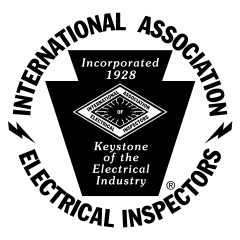
Where do the dangers lie?
Some of the most common wiring problems found during a typical home inspection include worn out or improperly wired grounded receptacles, loose, hanging wiring, and open junction boxes. In addition, it is common to find wiring under joists or connections not in boxes, inadequately sized wiring and/or switches (which means not heavy enough to handle the load), oversized fuses or even circuit breakers.
While Ground Fault Circuit Interrupter (GFCIs) are required in all new construction for exterior, garage, basement, bathroom and kitchen circuits, ideally they should be retrofitted into all existing homes. Although industry standards require that home inspectors test a “representative sample” of outlets, switches, and light fixtures, it is best to check every one for proper position and spacing during an inspection.
Where are the Risks for Electrocution during a Home Inspection?
OSHA and other sources stress that you can get a painful shock and potential muscle control loss for contact with a circuit generating 6–25 milliamperes (mA). The reality is that any power source capable of supplying more than 30mA has the potential to kill you regardless of voltage. Consequently, there are some basic procedures to follow when working with electrical equipment during a home inspection.
Tips and Precautions to Avoid Electrocution During Home Inspections
The first step in the electrical circuitry portion of a home inspection is to turn off the power to electrical circuits before inspection and then test the circuits with your multimeter to ensure that the power is off. Even during roof inspections, home inspectors encounter dangers of electricity such as with overhead power lines or the electrical drop from the power line pole. It’s recommended that you stay at least ten feet or more from them to avoid possible electrocution even as you visually inspect the drop for fraying or other electrical hazards.
Attic inspections can also pose some electrical risks as they may bring inspectors into close contact with open circuits or faulty wiring. It is wise to remember that even “safe” voltages can be dangerous, so receiving even a mild shock when you are on a roof can cause you to lose your balance.
Some ways to prevent these accidents are through the use of insulation, guarding, grounding, electrical protective devices and clothing as well as safe work practices. It is recommended that all home inspectors wear electrical gloves that meet ASTM D-120/EIC903 specifications. Electrical gloves should have high dielectrical and physical strength. They typically consist of liner gloves under rubber insulating gloves, with protective leather gloves worn over these.
Always wear insulated shoes when inspecting any electric circuitry or receptacles. Although it is common sense to avoid working in areas that combine water and electrical circuits, if that cannot be avoided, wear rubber boots and gloves to lesson your chance of getting shocked.
When utilizing any tools during a home inspection, be sure that they have proper insulation. Insulators such as glass, mica, rubber, or plastic used to coat metals and other conductors help stop or reduce the flow of electrical current. This helps prevent shock, fires, and short circuits.
Inspectors should be armed with a variety of electrical testers such as a high quality tester for testing ground-fault circuit interrupter (GFCI) devices. Ideally the home inspector should be armed with the best and most versatile electrical tester that they can afford. This is typically classified as a tester that checks for proper operation of arc-fault and ground-fault circuit interrupter devices (AFCI/GFCI tester). This is in addition to the ability to test for the presence of 120-volt and 240-volt electrical current.
Every home inspector should know that home inspector E & O Insurance is a necessary safeguard to the legal and financial possibilities of damage suits from home inspection oversights. Even with comprehensive home inspector E & O Insurance, it is in the best interest of the home inspector to utilize the best tools and judgment to avoid overlooking a potential problem before tapping the insurance becomes necessary. All of these precautions work to provide physical and legal protection for the home inspector so that they can avoid electrocution as well as unsafe conditions that can come back to haunt them.









